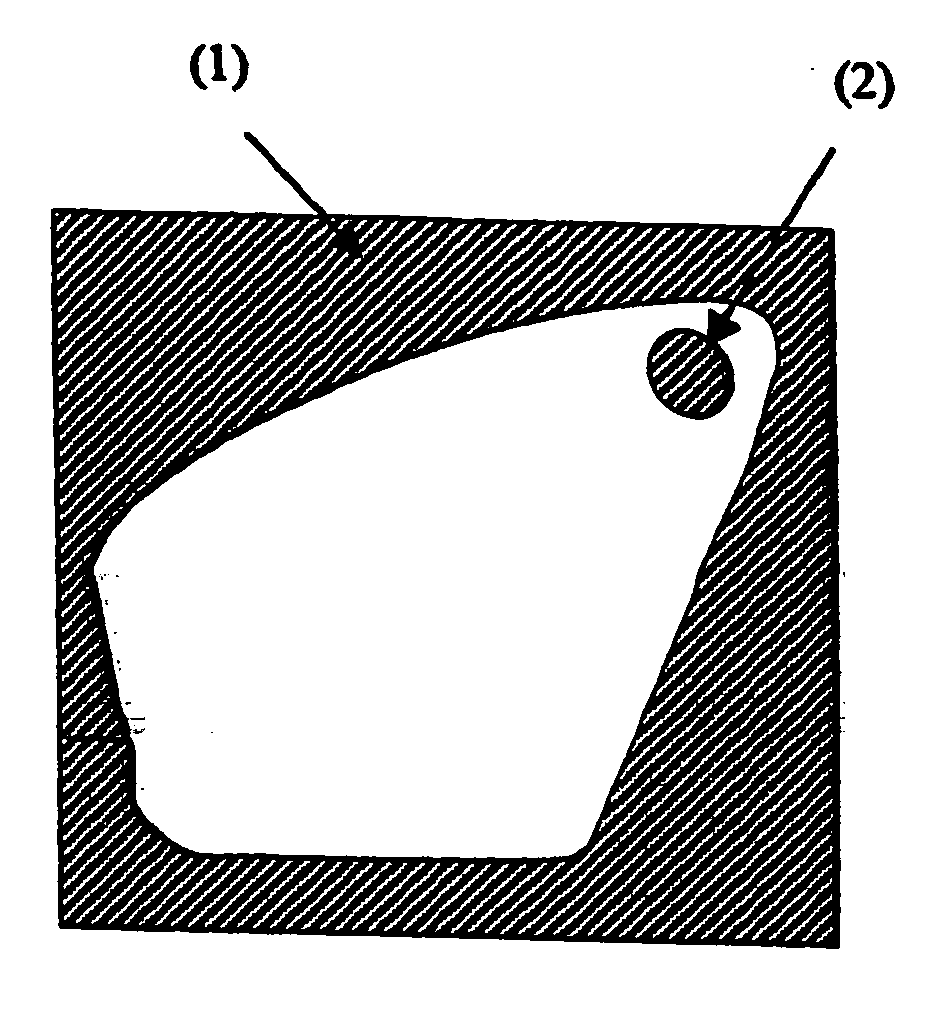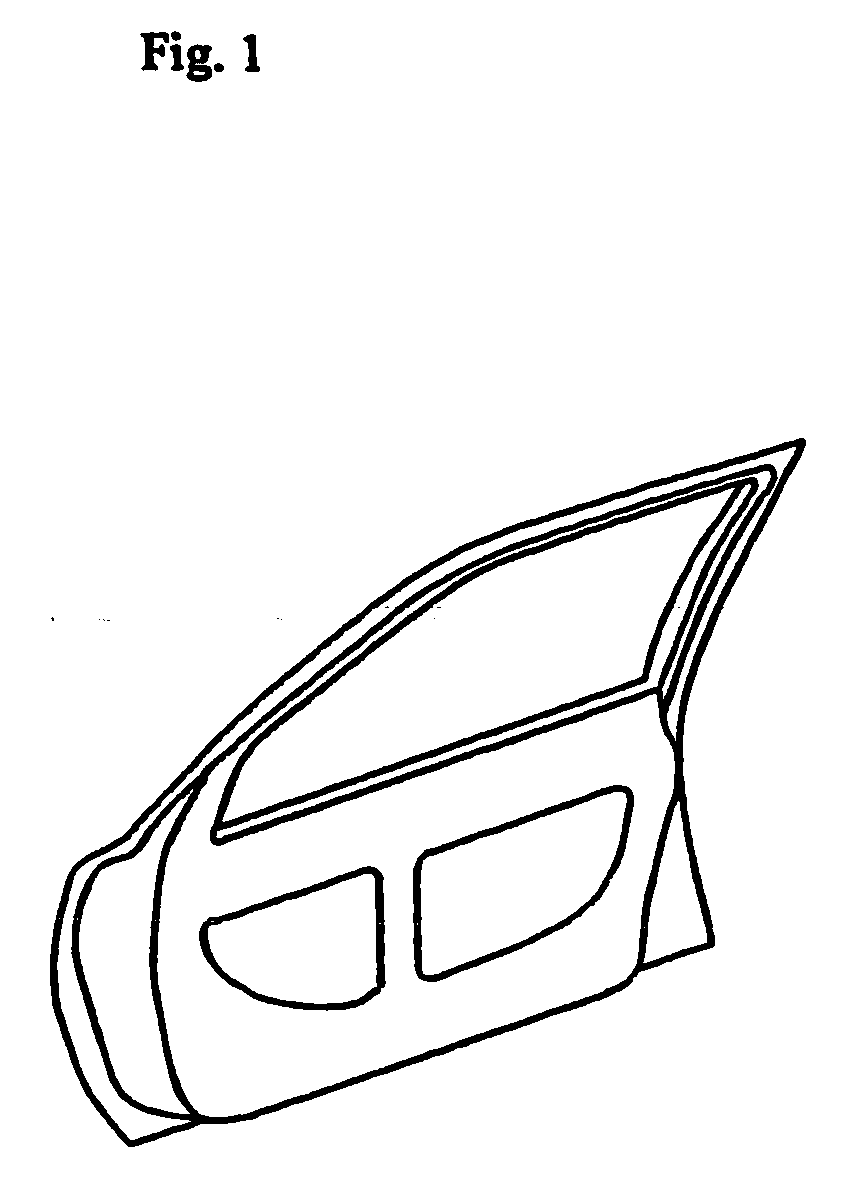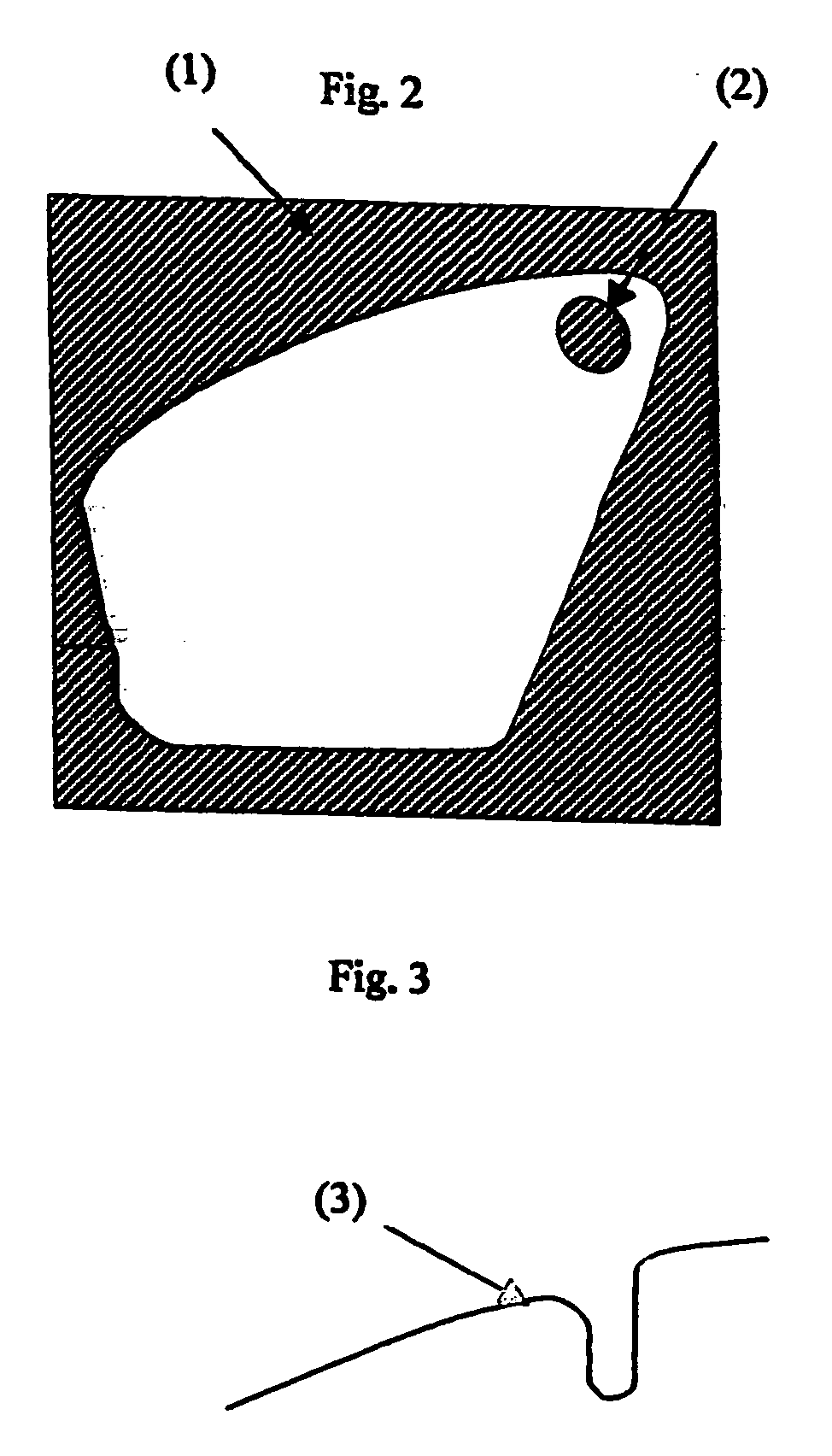Method for warm swaging al-mg alloy parts
a technology of almg alloy parts and cold swaging, which is applied in the field of cold swaging almg alloy parts, can solve the problems of no industrial application
- Summary
- Abstract
- Description
- Claims
- Application Information
AI Technical Summary
Benefits of technology
Problems solved by technology
Method used
Image
Examples
example 1
(Deep Drawing of a Door Lining)
[0039] The door lining shown in FIG. 1 comprising an integrated window frame with a box depth equal to at least 100 mm is made using the process according to the invention in a single drawing pass. The radii of curvature used in the part are tight (up to 6 to 8 mm). The openings are subsequently trimmed and cut using traditional cutting tools.
[0040] The starting point is a parallelogram shaped blank made of pre-lubricated 1 mm thick 5754-O alloy with an aqueous emulsion that, after evaporation, leaves a dry mineral oil based film (paraffin in C14 to C28).
[0041] This part cannot be made using a conventional drawing process (cold) in a single pass; breakages occurs at the radius of the punch, where the metal is highly stressed in bending under tension in plane deformation. The metal is then no longer strong enough to entrain material pressed by the blank holder. A reduction in the pressure of the blank holder causes the formation of folds.
[0042] App...
example 2
Door Lining With Drawing Die
[0046] 2a—A part similar to that in example 1 is made, but with a particularly critical drawing die (3) at the corner of a window, with the geometry shown in FIG. 2. Applying the same conditions as in example 1, in other words by preheating the blank only in the peripheral area (1) shown in FIG. 2, a rupture appears at the end of the travel distance during formation of the drawing die (3). The preheating of the blank was modified in an attempt to prevent this rupture by adding a shim (2) under the preheating shoe, so as to preheat a corner area in addition to the periphery to 300° C. as shown in FIG. 2. It can be seen that if the shim covers the entire corner area, the metal becomes too soft, and the part cannot be taken out without breakage. However, if heating is only done nearby on each side of the area in which the drawing die (2) will be located at a distance of more than 5 mm, the part can be taken out without breakage. In such a case, it would no...
example 3
Door Lining From a Strain Hardened Blank
[0050] The same part is made as in example 1, but starting from a 5182-H18 blank for which the yield stress is more than 300 MPa and its Vickers hardness is more than 110 Hv. The blank is pre-lubricated with an emulsion saturated in lithium stearate.
[0051] The blank is too hard to be formed. The role of preheating is to facilitate deformation in the areas that will be highly deformed, in other words peripheral areas. Therefore, these areas are preheated by the same device as above but to a temperature of 350° C. Fast and local preheating maintains a large temperature gradient within the blank (250° C. on 10 cm).
[0052] The tools are heated to 300° C. Simple regulation maintains the tools at 300° C. since the heat exchange with the slightly warmer blank is lower. Heating of the deformed parts during forming reduces the flow stress, which means that drawing can be completed successfully, since the softened metal can flow in the tool and be sh...
PUM
| Property | Measurement | Unit |
|---|---|---|
| temperature | aaaaa | aaaaa |
| temperature | aaaaa | aaaaa |
| distance | aaaaa | aaaaa |
Abstract
Description
Claims
Application Information
 Login to View More
Login to View More - R&D
- Intellectual Property
- Life Sciences
- Materials
- Tech Scout
- Unparalleled Data Quality
- Higher Quality Content
- 60% Fewer Hallucinations
Browse by: Latest US Patents, China's latest patents, Technical Efficacy Thesaurus, Application Domain, Technology Topic, Popular Technical Reports.
© 2025 PatSnap. All rights reserved.Legal|Privacy policy|Modern Slavery Act Transparency Statement|Sitemap|About US| Contact US: help@patsnap.com



